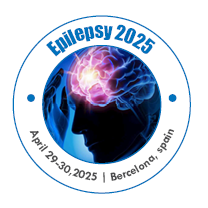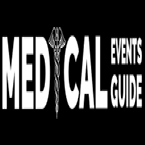Session and Tracks
Track 1 : Pediatric Epilepsy
A condition characterized by recurrent seizures in children, presents unique challenges and opportunities in the field of neurology. Unlike epilepsy in adults, pediatric epilepsy often involves a wide range of etiologies and can manifest in various forms, from benign childhood epilepsies that may resolve as the child grows, to more severe and persistent forms that can significantly impact development and quality of life. The management of pediatric epilepsy requires a comprehensive, multidisciplinary approach that addresses both medical and psychosocial aspects of care. Early and accurate diagnosis is crucial, as it guides the choice of treatment strategies, which may include antiepileptic drugs (AEDs), dietary therapies such as the ketogenic diet, or surgical interventions for drug-resistant cases. Advances in neuroimaging and genetic testing have improved diagnostic precision, enabling tailored treatments that target the specific underlying causes of seizures. Pediatric epilepsy care also emphasizes the importance of minimizing medication side effects, which can affect cognitive and emotional development. As children grow, transitioning from pediatric to adult care involves careful planning to ensure continuity of treatment and support. Additionally, pediatric epilepsy management often includes addressing the educational and social needs of children, as seizures and their treatments can impact school performance and peer relationships.
Track 2 : Epilepsy and Aging
Epilepsy and aging intersect in complex ways, presenting unique challenges and considerations for older adults who either develop epilepsy later in life or have a history of the condition that persists into old age. For many elderly patients, epilepsy can be a new diagnosis, often linked to age-related factors such as cerebrovascular disease, neurodegenerative disorders or brain tumors, which can complicate diagnosis and management. Seizures in older adults may present differently compared to younger populations, with atypical seizure manifestations and increased difficulty in distinguishing them from other age-related conditions like transient ischemic attacks or syncope. The treatment of epilepsy in the elderly necessitates a nuanced approach, as the pharmacokinetics of antiepileptic drugs (AEDs) can be altered by age-related physiological changes, such as decreased renal and hepatic function. This can affect drug metabolism and increase the risk of adverse effects, making careful selection and monitoring of medications essential to balance efficacy with safety. Additionally, polypharmacy, common in older adults due to concurrent medical conditions, can lead to drug interactions and complicate epilepsy management. Cognitive decline and memory issues associated with aging can further complicate the impact of epilepsy, as frequent seizures or side effects from AEDs may exacerbate cognitive impairment. Non-pharmacological treatments, including lifestyle modifications and psychosocial support, play a crucial role in managing epilepsy in older adults, addressing factors such as fall risk, quality of life, and social support.
Track 3: Emergency Management of Seizures
Emergency management of seizures involves a critical and timely response to ensure the safety and well-being of the patient, especially during a prolonged or severe seizure episode. When a seizure occurs, the primary goal is to prevent injury and provide appropriate care, starting with ensuring that the individual is in a safe environment. For generalized tonic-clonic seizures, which often last between one to three minutes, it is crucial to protect the patient from potential harm by moving any dangerous objects away and cushioning their head if possible. During the seizure, one should avoid restraining the patient or placing objects, such as a tongue depressor, in their mouth, as these actions can lead to injury or worsen the situation. It is also important to monitor the duration of the seizure, as seizures lasting more than five minutes, or recurrent seizures without full recovery in between (known as status epilepticus), require immediate medical intervention. If a seizure persists beyond five minutes, or if the patient is having multiple seizures in a row, emergency medical services should be contacted immediately, mimic seizures is important for ensuring appropriate treatment. If the person has any specific medical conditions, such as this may indicate a serious condition that requires advanced medical care
Track 4: Epilepsy Management of Seizures
Effective management of seizures in epilepsy requires a multifaceted approach that integrates medical treatment, lifestyle modifications, and ongoing monitoring to optimize control and minimize impact on daily life. The cornerstone of seizure management is the use of antiepileptic drugs (AEDs) which are selected based on the type of seizures, the patient's overall health, and potential side effects. The goal is to achieve seizure freedom or significant reduction in frequency with the least possible side effects. Regular follow-up with a neuronal is essential to adjust medication dosages, monitor for adverse effects, and evaluate the effectiveness of the treatment plan. For patients with drug-resistant epilepsy additional treatment options may be considered, including surgical interventions to remove or alter the brain tissue responsible for seizure generation, or neuromodulation therapies such as vagus nerve stimulation (VNS) or responsive neurostimulation (RNS). In addition to pharmacological and surgical options, lifestyle and behavioral strategies play a critical role in managing seizures. This includes identifying and avoiding seizure triggers, such as lack of sleep, stress, or specific dietary factors, and implementing consistent routines to support overall health. Educational efforts for patients and their families are crucial, providing them with knowledge on how to recognize, respond to, and manage seizures effect.
Track 5: Epilepsy and lifestyle Modification
Lifestyle modification is a crucial component of epilepsy management, as it can significantly influence seizure control, overall health, and quality of life. For individuals with epilepsy, certain lifestyle adjustments can help minimize seizure frequency and improve the effectiveness of treatment. One of the most important modifications is maintaining a consistent and adequate sleep schedule, as sleep deprivation is a well-known seizure trigger. Establishing a regular routine with sufficient rest can help stabilize brain activity and reduce the likelihood of seizures. Stress management is another key factor, as emotional and psychological stress can provoke seizures or exacerbate existing conditions. Techniques such as mindfulness, relaxation exercises, and cognitive-behavioral therapy can be effective in managing stress and improving emotional well-being. Diet also plays a significant role; for some patients, dietary changes such as adopting a ketogenic or modified Atkins diet may help in achieving better seizure control, particularly in cases that do not respond well to medication. Regular physical activity is beneficial not only for overall health but also for reducing seizure frequency and improving mood. However, it is essential to engage in exercise with caution, as certain types of physical activity or exertion could potentially trigger seizures in some individuals persons.
Track 6: Cognitive and lifestyle Modification
Cognitive and lifestyle modifications are vital strategies for enhancing overall well-being and managing various health conditions, including epilepsy, mental health disorders, and chronic illnesses. Cognitive modifications, which involve altering thought patterns and behaviors, play a significant role in improving mental health and daily functioning. Techniques such as cognitive-behavioral therapy (CBT) help individuals identify and challenge negative thought patterns, develop healthier coping mechanisms, and improve problem-solving skills. This therapeutic approach is effective in managing conditions like depression and anxiety, which often coexist with chronic health conditions, including epilepsy. Cognitive interventions can enhance self-awareness and emotional regulation, leading to better stress management and reduced symptom severity. Alongside cognitive strategies, lifestyle modifications, such as adopting a balanced diet, engaging in regular physical activity, and ensuring adequate sleep, are crucial for maintaining physical health and emotional stability. A balanced diet rich in essential nutrients supports brain function and overall health, while regular exercise boosts mood, improves cognitive function, and reduces the risk of developing chronic diseases. Consistent sleep patterns are equally important, as sleep disturbances can negatively impact cognitive function and exacerbate mental health issues.
Track7 : Epilepsy and Pregnancy
Managing epilepsy during pregnancy presents unique challenges and requires a nuanced approach to balance the health and safety of both the mother and the developing fetus. Pregnant women with epilepsy face several considerations, including the impact of antiepileptic drugs (AEDs) on fetal development, potential changes in seizure frequency due to hormonal fluctuations, and the need for careful monitoring to prevent complications. The primary goal in managing epilepsy during pregnancy is to achieve optimal seizure control while minimizing risks to the fetus. This involves a collaborative approach between obstetricians, neurologists, and other healthcare providers to tailor treatment plans. Some AEDs, such as valproate are associated with a higher risk of congenital malformations and cognitive effects, leading to careful evaluation of medication choices and dosages. It is crucial to assess the risks and benefits of continuing or adjusting AED therapy during pregnancy, considering alternatives with a more favorable safety profile if necessary. Additionally, pregnant women with epilepsy need regular monitoring, including routine ultrasound scans to check fetal development and frequent consultations to adjust treatment as needed. Maintaining a healthy lifestyle, including proper nutrition, adequate prenatal vitamins such as folic acid, and regular exercise, is important for both maternal and fetal health. Prenatal folic acid supplementation is particularly critical as it helps reduce the risk of neural tube defects, which is a concern for women taking certain AEDs. The risk of seizure-related complications, such as falls or injury, also necessitates additional safety measures, and planning for labor and delivery should involve a well-coordinated approach to address potential seizures during childbirth.
Track 8: Pediatric and Adult Epilepsy Transition
The transition from pediatric to adult epilepsy care is a critical and complex process that requires careful planning and coordination to ensure continuity of treatment and support for individuals moving from child-centered to adult-oriented healthcare systems. This transition often involves addressing several key challenges, including the shift in responsibility for managing the condition from parents to the young adult, the need for a new healthcare provider who specializes in adult epilepsy, and the potential changes in treatment approaches. For adolescents with epilepsy, this period can be marked by significant developmental changes, increased independence, and evolving healthcare needs. Effective transition planning involves preparing both the patient and their family for the upcoming changes, ensuring that the young adult understands their condition, treatment regimen, and the importance of self-management. Coordination between pediatric and adult healthcare providers is essential to create a comprehensive transition plan that includes reviewing medical history, assessing ongoing treatment efficacy, and addressing any new health concerns that may arise. Educational support is also crucial, as young adults need to be informed about managing their condition in the context of their changing lifestyle, including the impact on education, employment, and social activities. Additionally, addressing psychosocial aspects, such as coping with the emotional and psychological challenges of transitioning, is important for ensuring a smooth adjustment. For those with drug-resistant epilepsy or complex care needs, the transition may involve exploring new therapeutic options or clinical trials available in adult care settings.
Track 9 : Epilepsy and Seizure Classification
Epilepsy and seizures are classified based on their onset, clinical features, and underlying causes, which is essential for accurate diagnosis and effective treatment. Seizures are broadly categorized into two main types: focal (or partial) seizures and generalized seizures. Focal seizures originate in a specific area of the brain and can be further classified into focal aware seizures, where the individual remains conscious, and focal impaired awareness seizures, where consciousness is altered. These can sometimes evolve into generalized seizures. Generalized seizures involve both hemispheres of the brain from the onset and include several subtypes such as tonic-clonic seizures, characterized by a combination of muscle rigidity and rhythmic jerking; absence seizures, marked by brief lapses in consciousness; myoclonic seizures, which involve sudden muscle jerks; and atonic seizures, resulting in a sudden loss of muscle tone. The classification system also encompasses seizures that do not fit neatly into the focal or generalized categories, such as those with unknown onset. The International League Against Epilepsy (ILAE) has developed a comprehensive classification framework to better categorize seizures based on their specific characteristics, which includes the type of seizure, its onset, and its effect on consciousness. This system is designed to aid clinicians in diagnosing epilepsy more accurately and to tailor treatment approaches effectively. Accurate classification is crucial because the type of seizure and its frequency significantly influence treatment decisions, which may involve antiepileptic drugs, surgical options, or other therapies. Moreover, understanding the classification helps in identifying the potential underlying causes of epilepsy, such as structural brain abnormalities, genetic factors, or metabolic disturbances, which can inform more targeted and effective management strategies.
Track 10 : Global Health and Epilepsy
Epilepsy, a widespread neurological disorder affecting approximately 50 million people globally, poses significant challenges to global health due to its diverse manifestations, varying access to care, and the socio-economic impact it has on individuals and communities. In many low- and middle-income countries, epilepsy remains poorly understood, often stigmatized, and inadequately treated, leading to a substantial treatment gap where a significant number of individuals with epilepsy do not receive the necessary medical care. This disparity is compounded by a lack of resources, trained healthcare professionals, and access to antiepileptic drugs (AEDs), which are critical for effective seizure management. The World Health Organization (WHO) has recognized epilepsy as a major public health issue, emphasizing the need for comprehensive strategies to improve diagnosis, treatment, and support systems worldwide. Efforts to enhance global health and epilepsy care involve increasing awareness and education to reduce stigma, integrating epilepsy care into primary health systems, and improving the availability of medications and diagnostic tools. Public health initiatives and partnerships, such as the Global Campaign Against Epilepsy, aim to address these challenges by promoting the implementation of community-based programs, improving access to care, and supporting research into epilepsy treatment and management.
Track 11 : Advancements in Antiepileptic Drugs (AEDs)
Advancements in antiepileptic drugs (AEDs) represent a significant leap in the management of epilepsy, offering new hope for individuals with seizures that are difficult to control. Modern AEDs, developed with improved pharmacological profiles, are designed to target specific neurotransmitter systems or ion channels involved in seizure generation, leading to enhanced efficacy and reduced side effects compared to older medications. For instance, drugs like levetiracetam and lamotrigine have become popular due to their favorable side effect profiles and broad-spectrum efficacy. Additionally, the development of novel AEDs such as cannabidiol, derived from cannabis, has shown promise in treating drug-resistant epilepsy particularly in syndromes like Dravet and Lennox-Gastaut. The ongoing research into personalized medicine aims to tailor AED therapy based on individual genetic and metabolic profiles, optimizing treatment outcomes and minimizing adverse effects. This advancement also includes the refinement of drug delivery systems, such as extended-release formulations, which provide more stable blood levels of the medication and improve adherence. However, challenges remain, including the high cost of new drugs and the need for continued research into their long-term safety and effectiveness. Overall, the evolution of AEDs is transforming epilepsy management by offering more effective and individualized treatment options.
Track 12. Epilepsy Surgery: Indications and Outcomes
Epilepsy surgery is a critical option for individuals with drug-resistant epilepsy, providing a potential cure for those whose seizures cannot be controlled with medication alone. The surgical approach involves removing or altering the brain tissue responsible for seizure generation. Key indications for epilepsy surgery include the presence of a well-defined epileptogenic focus that can be safely resected and the failure of multiple AEDs to achieve seizure control. Pre-surgical evaluation typically involves a combination of neuroimaging techniques, such as MRI and PET scans, and invasive monitoring, including intracranial EEG, to precisely localize the seizure focus. Surgical options range from resective surgery, such as temporal lobectomy, to less invasive procedures like laser ablation. Outcomes of epilepsy surgery can be highly favorable, with many patients achieving significant seizure reduction or complete freedom from seizures. However, the decision to proceed with surgery involves careful consideration of potential risks, including cognitive and neurological deficits. Post-surgical care includes ongoing monitoring and rehabilitation to address any functional changes and to ensure optimal long-term outcomes.
Track 13: The Role of Neurostimulation in Epilepsy Management
Neurostimulation therapies, including responsive neurostimulation (RNS) and deep brain stimulation (DBS), have emerged as promising treatments for epilepsy, particularly for individuals with drug-resistant seizures. RNS involves implanting a device that detects abnormal brain activity and delivers targeted electrical stimulation to prevent seizures. DBS, on the other hand, uses implanted electrodes to modulate brain activity in specific regions associated with seizure generation. Both therapies are designed to offer alternatives when traditional AEDs fail to provide adequate control. The efficacy of neurostimulation varies depending on factors such as the seizure type, brain region targeted, and individual patient characteristics. Clinical trials and real-world experiences have demonstrated that these therapies can significantly reduce seizure frequency and improve quality of life for many patients. However, challenges remain, including the need for precise patient selection, device maintenance, and potential side effects such as infection or device malfunction. Ongoing research aims to optimize neurostimulation techniques and expand their applicability, including exploring new stimulation targets and combining neurostimulation with other therapeutic modalities.
Track 14. The Impact of Epilepsy on Cognitive Function and Quality of Life
Epilepsy has a profound impact on cognitive function and quality of life, affecting function. The cognitive effects of epilepsy may result from the seizures themselves, the underlying brain abnormalities causing the seizures, or the side effects of antiepsileptic drug (AEDs). In addition to cognitive challenges, individuals with epilepsy often face emotional and social difficulties, including stigma, anxiety, and depression, which can further affect their quality of life. The impact on daily activities, such as education, employment, and social interactions, can be significant, leading to reduced opportunities and increased reliance on caregivers. Addressing these issues requires a holistic approach that includes optimizing seizure control through medication or surgery, providing cognitive and psychological support, and fostering social inclusion and educational opportunities. Multidisciplinary care teams, including neurologists, psychologists, and occupational therapists, play a crucial role in managing the cognitive and psychosocial aspects of epilepsy to improve overall quality of life for affected individuals.
Track 15: Epilepsy and Comorbid Conditions: A Comprehensive Approach
Epilepsy often occurs alongside other medical and psychological conditions, known as comorbidities, which can complicate diagnosis and treatment. Common comorbid conditions include psychiatric disorders such as anxiety and depression, which can be exacerbated by the stress and stigma associated with epilepsy. Additionally, individuals with epilepsy may experience cognitive impairments, including memory problems and learning difficulties, which can affect their daily functioning and quality of life. Comorbid medical conditions, such as cardiovascular disease or diabetes, can also interact with epilepsy and influence treatment choices. Managing epilepsy in the context of comorbidities requires a comprehensive approach that addresses both the primary seizure disorder and the associated conditions. This involves careful medication management to minimize drug interactions and side effects, as well as integrating mental health support and lifestyle modifications. Coordinating care among multiple healthcare providers, including neurologists, psychiatrists, and primary care physicians, is essential for achieving optimal outcomes and improving the overall well-being of individuals with epilepsy.
Track 16: Genetic Advances in Epilepsy Diagnosis and Treatment
Recent advancements in genetic research have significantly impacted the diagnosis and treatment of epilepsy, particularly in understanding its underlying causes and developing targeted therapies. Genetic studies have identified numerous gene mutations associated with various epilepsy syndromes, enabling more precise diagnosis and personalized treatment plans. For example, genetic testing can now identify specific mutations responsible for conditions such as Dravet syndrome or infantile spasms, leading to targeted therapeutic strategies and better prognostic information. The development of gene therapy and other novel genetic-based interventions holds promise for addressing genetic causes of epilepsy at their source. Additionally, pharmacogenomics, the study of how genes influence drug response, allows for personalized medication choices based on an individual’s genetic profile, potentially improving efficacy and reducing adverse effects. As research continues to uncover new genetic factors and mechanisms, the integration of genetic information into clinical practice is expected to enhance the precision of epilepsy diagnosis and treatment, offering new opportunities for personalized care and improved outcomes.
Track 17: Epilepsy and Pregnancy: Managing Risks and Ensuring Safety
Managing epilepsy during pregnancy requires careful consideration to balance the health of both the mother and the developing fetus. Pregnant women with epilepsy face several unique challenges, including the potential impact of antiepileptic drugs (AEDs) on fetal development and the need to adjust treatment regimens due to hormonal changes. Some AEDs, such as valproate, are associated with a higher risk of congenital malformations, necessitating careful selection and monitoring of medications during pregnancy. Regular prenatal care, including ultrasound scans and other assessments, is crucial to monitor fetal development and address any potential complications. Adequate prenatal folic acid supplementation is essential to reduce the risk of neural tube defects, which can be increased by certain AEDs. The management plan should also include strategies to minimize the risk of seizures during labor and delivery and provide appropriate postpartum care. Coordination between obstetricians, neurologists, and other healthcare providers is vital to ensure a comprehensive approach to managing epilepsy during pregnancy and optimizing outcomes for both mother and baby.
Track 18: The Role of Seizure Monitoring and Technology in Epilepsy Management
Seizure monitoring and technology play a pivotal role in enhancing epilepsy management by providing real-time data and improving diagnostic accuracy. Advances in wearable devices and mobile applications allow for continuous monitoring of seizure activity, enabling timely intervention and better management of the condition. Devices such as smartwatches equipped with electroencephalogram (EEG) sensors can detect seizure activity and alert caregivers or medical professionals, improving safety and response. Additionally, implantable devices like responsive neurostimulation (RNS) systems provide real-time monitoring and targeted stimulation to prevent seizures. The integration of artificial intelligence (AI) and machine learning into seizure monitoring technologies offers the potential to analyze large volumes of data, predict seizure onset, and personalize treatment plans. These technological advancements enhance the ability to track seizure patterns, optimize medication regimens, and provide valuable insights for both patients and healthcare providers. However, challenges related to data privacy, device maintenance, and accessibility must be addressed to fully realize the benefits of these technologies in epilepsy management.
Track 19: Epilepsy and Lifestyle Modifications: Enhancing Seizure Control
Lifestyle modifications play a crucial role in managing epilepsy and enhancing seizure control, complementing medical treatments and improving overall well-being. Key lifestyle changes include maintaining a consistent sleep schedule, as sleep deprivation is a known trigger for seizures. Stress management techniques, such as mindfulness and relaxation exercises, can help reduce the frequency of seizures by addressing emotional and psychological stressors. Dietary modifications, including adherence to specific diets like the ketogenic diet, may be beneficial for individuals with drug-resistant epilepsy. Regular physical activity promotes overall health and can help manage seizure frequency, although care should be taken to avoid activities that might trigger seizures. Additionally, avoiding known seizure triggers, such as excessive alcohol consumption and certain rec controlreational drugs, is important for maintaining various aspects of an individual's daily living. Seizures, particularly those that are frequent or severe, can lead to cognitive impairment, including difficulties with memory, attention, and executive.
Track 20: The Role of Neurostimulation in Epilepsy Management
Neurostimulation therapies, including responsive neurostimulation (RNS) and deep brain stimulation (DBS), have emerged as promising treatments for epilepsy, particularly for individuals with drug-resistant seizures. RNS involves implanting a device that detects abnormal brain activity and delivers targeted electrical stimulation to prevent seizures. DBS, on the other hand, uses implanted electrodes to modulate brain activity in specific regions associated with seizure generation. Both therapies are designed to offer alternatives when traditional AEDs fail to provide adequate control. The efficacy of neurostimulation varies depending on factors such as the seizure type, brain region targeted, and individual patient characteristics. Clinical trials and real-world experiences have demonstrated that these therapies can significantly reduce seizure frequency and improve quality of life for many patients. However, challenges remain, including the need for precise patient selection, device maintenance, and potential side effects such as infection or device malfunction. Ongoing research aims to optimize neurostimulation techniques and expand their applicability, including exploring new stimulation targets and combining neurostimulation with other therapeutic modalities. Overall, neurostimulation represents a valuable addition to the therapeutic arsenal for managing drug-resistant epilepsy.
Track 21 : The Impact of Epilepsy on Cognitive Function and Quality of Life
Epilepsy has a profound impact on cognitive function and quality of life, affecting various aspects of an individual's daily living. Seizures, particularly those that are frequent or severe, can lead to cognitive impairment, including difficulties with memory, attention, and executive function. The cognitive effects of epilepsy may result from the seizures themselves, the underlying brain abnormalities causing the seizures, or the side effects of antiepileptic drugs (AEDs). In addition to cognitive challenges, individuals with epilepsy often face emotional and social difficulties, including stigma, anxiety, and depression, which can further affect their quality of life. The impact on daily activities, such as education, employment, and social interactions, can be significant, leading to reduced opportunities and increased reliance on caregivers. Addressing these issues requires a holistic approach that includes optimizing seizure control through medication or surgery, providing cognitive and psychological support, and fostering social inclusion and educational opportunities. Multidisciplinary care teams, including neurologists, psychologists, and occupational therapists, play a crucial role in managing the cognitive and psychosocial aspects of epilepsy to improve overall quality of life for affected individuals.
Track 22: Epilepsy and Comorbid Conditions: A Comprehensive Approach
Epilepsy often occurs alongside other medical and psychological conditions, known as comorbidities, which can complicate diagnosis and treatment. Common comorbid conditions include psychiatric disorders such as anxiety and depression, which can be exacerbated by the stress and stigma associated with epilepsy. Additionally, individuals with epilepsy may experience cognitive impairments, including memory problems and learning difficulties, which can affect their daily functioning and quality of life. Comorbid medical conditions, such as cardiovascular disease or diabetes, can also interact with epilepsy and influence treatment choices. Managing epilepsy in the context of comorbidities requires a comprehensive approach that addresses both the primary seizure disorder and the associated conditions. This involves careful medication management to minimize drug interactions and side effects, as well as integrating mental health support and lifestyle modifications. Coordinating care among multiple healthcare providers, including neurologists, psychiatrists, and primary care physicians, is essential for achieving optimal outcomes and improving the overall well-being of individuals with epilepsy. A holistic approach that considers the interplay between epilepsy and comorbid conditions can enhance treatment efficacy and quality of life.





















